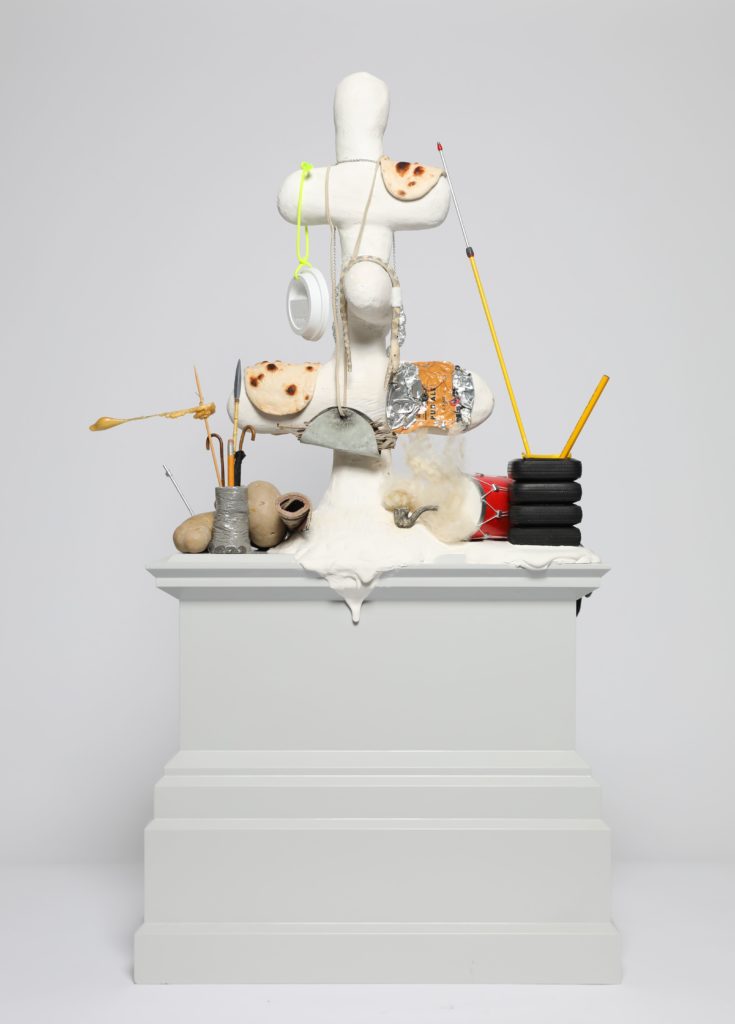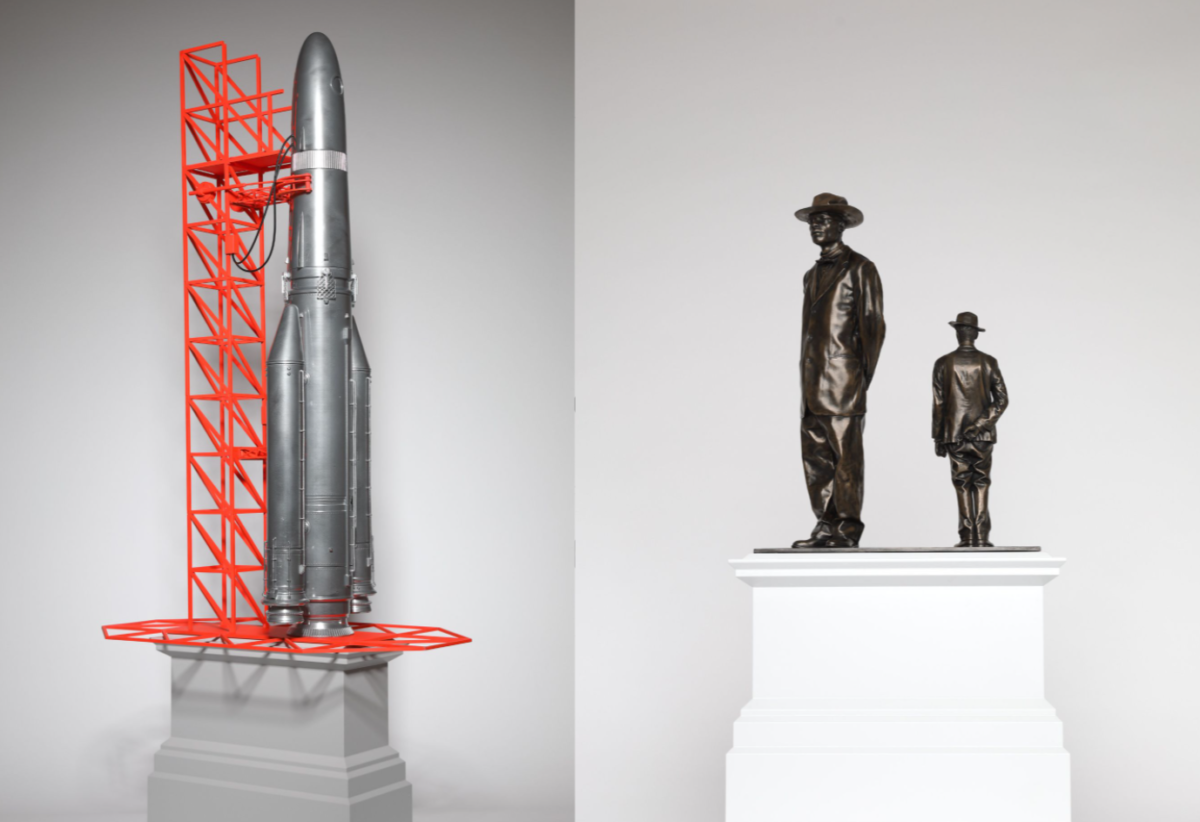“The world’s most high-profile public art prize,” has announced it’s shortlist. Trafalgar Square’s iconic Fourth Plinth’s next installment will be chosen by the public from a list including a towering grain silo filled with plants, the reimagining of a 1914 photograph of pan-Africanist John Chilembwe and a work made from the casts of the faces of 850 trans people. Models by Nicole Eisenman, Samson Kambalu, Goshka Macuga, Ibrahim Mahama, Teresa Margolles and Paloma Varga Weisz are on display at the National Gallery from 24 May to 4 July 2021 and available to view online, with the public encouraged to share their views.
The new proposals for the Fourth Plinth are:

- The Jewellery Tree (above) by Nicole Eisenman, recreating the household object on a monumental scale, with Lord Nelson’s medals, a fife and drum and a plastic coffee lid
- Antelope (above) by Samson Kambalu, restaging a 1914 photograph of Baptist preacher and pan-Africanist John Chilembwe and European missionary John Chorley. Chilembwe wears a hat in an act of defiance as this was illegal at the time.
- GONOGO (above) by Goshka Macuga, a giant rocket encouraging audiences to look beyond our own immediate surroundings and up to outer space.
- On Hunger and Farming in the Skies of the Past 1957-1966 (above) by Ibrahim Mahama, recreates a grain silo partially built by Eastern European architects in Ghana in the early 1960s in a towering structure filled with living plants.
- Improntas (Imprint) (above) by Teresa Margolles features casts of the faces of 850 trans people, most of whom are sex workers, arranged round the plinth in the form of a Tzompantli, a skull rack from Mesoamerican civilisations.
- Bumpman for Trafalgar Square (above) by Paloma Varga Weisz is a figure inspired by the German “Wundergestalt” tradition and the spirit of German folklore.
Since its inception in 1998, the prize of having an artwork installed on Trafalgar Square’s fourth plinth has become one of the art world’s most coveted. “These proposals from our most international line-up of artists to date shows yet again why the Fourth Plinth is the world’s most high-profile public art prize,” said Mayor of London Sadiq Khan. “As we emerge from lockdown, I’m encouraging Londoners and visitors to come back to the city through my Let’s Do London campaign, so do come and see this great exhibition at the National Gallery.”
The Fourth Plinth Commissioning Group who will choose two winning sculptures to be announced in late June. The new sculptures will be unveiled on the Fourth Plinth in 2022 and 2024 respectively, following on from the current sculpture THE END by Heather Phillipson, which will remain until September 2022. Before this decision is made, the public are being encouraged to visit the proposals in the National Gallery and to engage in debate over what piece should be named.
“Today we reveal the proposed artworksfrom six of the world’s most exciting contemporary artists,” commented Ekow Eshun, Chair of the Fourth Plinth Commissioning Group. “The imaginative range and creative ambition that each artist has shown further cements the importance of the Fourth Plinth programme in the international cultural landscape. Debate is at the heart of the programme, and the Commissioning Group looks forward to hearing the public’s thoughts on the proposals.”
This year, in a new partnership with Google Arts & Culture, audiences can explore more about the history of the Fourth Plinth, previous commissions and explore the new shortlist through an innovative immersive online experience at Google Arts & Culture: g.co/fourthplinth.

